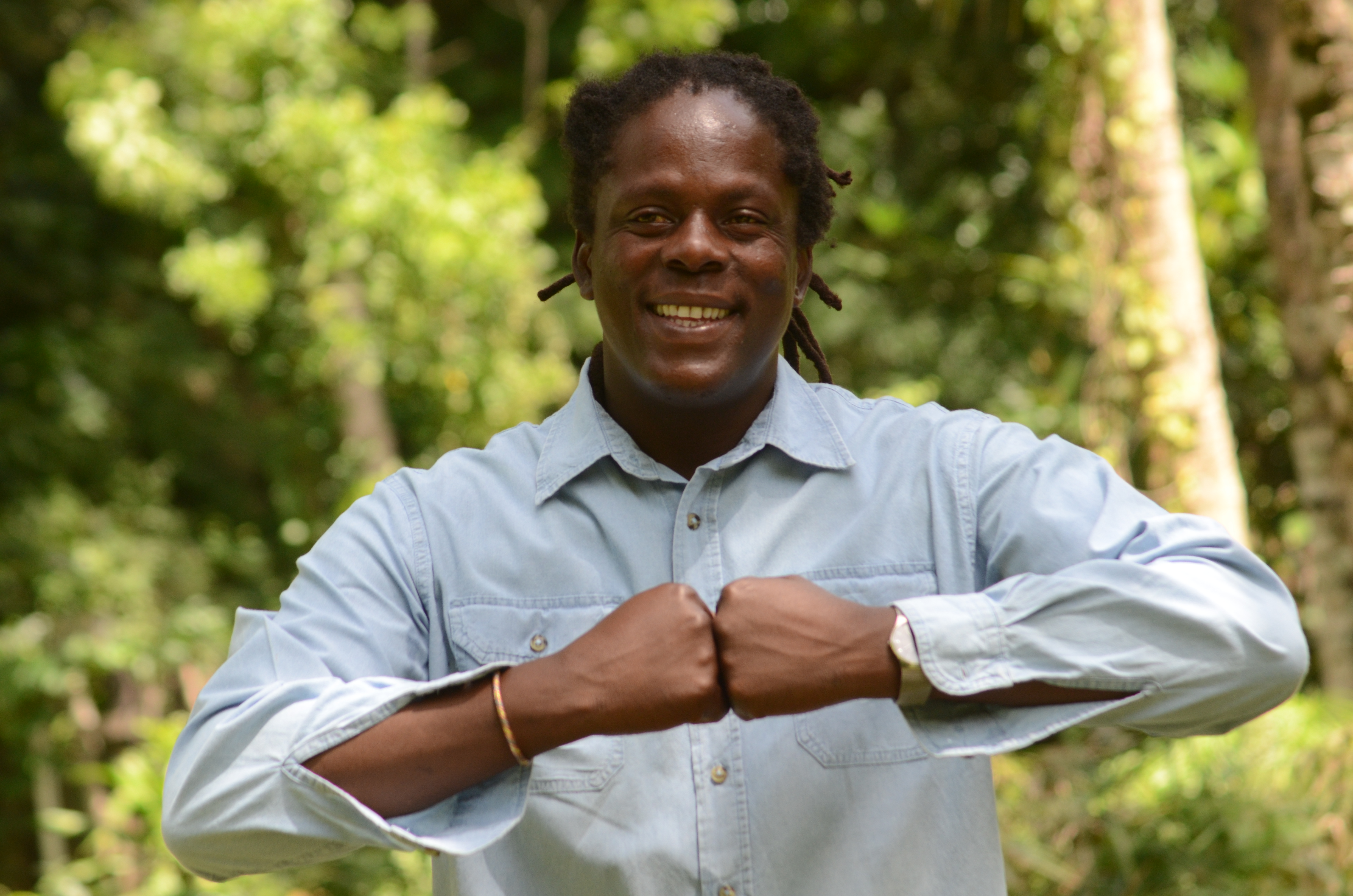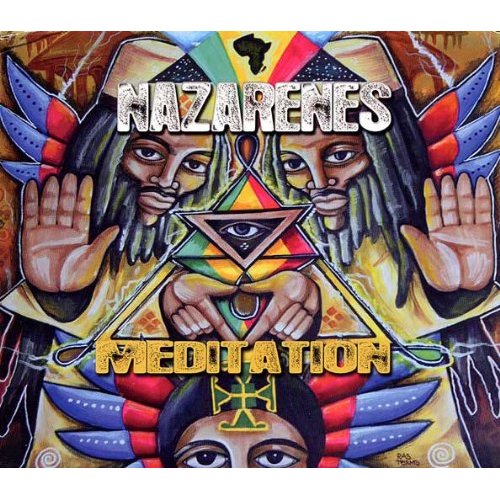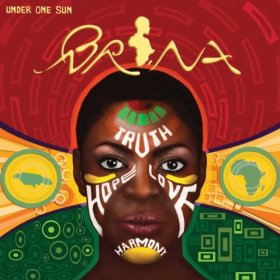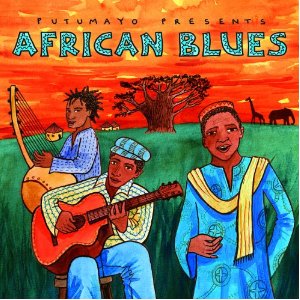Honoring Bob Marley
Written for the Bob Marley Celebrations,
February 2000
by Laura Gardner ©2000
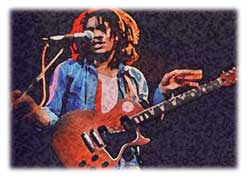
“My music will go on forever. Maybe it’s
a fool say that, but when me know facts, me can say facts. My music
will go on forever.”-The Honorable Robert Nesta Marley
Revolutionary, visionary, musician, near prophet,
father, messenger, son and the single most important influence on Reggae
music, Bob Marley has taken on an iconic status worldwide. His image and
his music appear in all corners of the earth, and he’s still moving people
with his universal and timeless message. Despite the commercialization
of Marley’s image since his death (a Universal Studios’ Bob
Marley theme park opened last year in Orlando, Florida, Tuff Gong clothing
is all the rage, Warner Brothers is releasing a Bob Marley biography starring
Rohan Marley and Lauryn Hill, and as of press time, “Chant Down Babylon,”
the tribute album featuring hip-hop artists, is #85 on the Billboard Top
200), Marley was a controversial and complex figure during his short life.
Born in a rural area of St. Ann’s Parish on
February 6, 1945, to a young, black, Jamaican woman (Cedella Booker Marley)
and a white British officer (Norval Marley), during a time in Jamaica
when society divided strictly along racial lines, Marley had to come to
terms with his own racial identity at an early age. In the video biography,
“Time Will Tell,” Marley was asked whether he was prejudiced
against white people. He replied, “I don’t have prejudice against
myself. My father was a white and my mother was black. Them call me half-caste
or whatever. Me don’t dip on nobody’s side. Me don’t dip
on the black man’s side nor the white man’s side. Me dip on
God’s side, the one who create me and cause me to come from black
and white.” Perhaps it was his biracial background that led Marley
to write songs with a universal message. One of his most profound songs
addressing unification, “War,” took the words of a speech by
Emperor Haile Selassie I of Ethiopia and put them to music, “Until
the philosophy which holds one race superior and another inferior is finally
discredited and abandoned÷WAR!”
Growing up, Bob had little contact with his father
and frequently moved around, living with aunts and friends all over the
island. But in 1957, Cedella Booker, who was then living in Kingston,
decided that her son should join her. The two lived in Trench Town, an
area of Kingston named for the part of the city that was built over the
ditch that drained the city’s sewage. There Bob met Neville “Bunny”
Livingston (who became Bunny Wailer), the son of the man Cedella was dating
at the time. Bob and Bunny would sit and groove to American radio, listening
to popular R&B artists like Sam Cooke, Curtis Mayfield, Ray Charles,
the Drifters and Fats Domino. Bob quit school and took a job as a welder,
but his heart was in the music. He and Bunny would spend all of their
free time together perfecting their vocals under Joe Higgs’ supervision.
It was with Joe that they eventually met youngster Peter McIntosh (later
shortened to Tosh). Although Bob had recorded “Judge Not” for
Leslie Kong’s Beverley’s label in 1962, he decided a year later
that performing with a group was the way to success. The three formed
a vocal trio and named themselves the Wailers, after ghetto sufferers
who had been born “wailing.”
In 1963, the Wailers signed to Clement “Sir
Coxone” Dodd’s Studio One label, and released “Simmer Down,”
which instantly became a number one hit. During the following two and
a half years, they recorded over one hundred songs, and at one point in
1965 held five of the top ten slots on the Jamaican charts. The Wailers
were practicing Rastafarians, so they had grown their dreadlocks and lived
by the words of the Bible. In 1966, Bob married Rita Anderson, and moved
to the United States where his mother was now living. But before the year
was over, he moved back to Jamaica, where Rastafari was growing in popularity.
Bob once said, “People want to listen to a message, word from Jah.
This could be passed through me or anybody. I am not a leader. Messenger.
The words of the songs, not the person, is what attracts people.”
In 1970, Aston “Familyman” Barrett (bass)
and his brother Carlton (drums) joined the Wailers as Jamaica’s indisputably
hardest rhythm section. The Wailers were a phenomenon in Jamaica, but
they were virtually unheard of elsewhere. Soon the tides would change,
and in 1972 the Wailers got their big break when Island Records’
president, Chris Blackwell, signed them. The resulting album, “Catch
A Fire,” (with “Stir It Up” and Tosh’s “Stop
That Train”) introduced Reggae to an international audience. The
following album, “Burnin’” (1973) included newer versions
of some of the older songs and showcased new songs, “Get Up Stand
Up” and “I Shot the Sheriff,” which became a huge hit for
Eric Clapton the following year in the United States.
The Wailers broke up soon after, leaving Bunny,
Peter and Bob to pursue their own musical careers. The reasons for the
break-up were never clear. Tosh claimed that Blackwell wanted Bob in front
because of his fair skin color and others claimed that Bunny and Peter
wanted to achieve their own success, apart from Bob. For whatever reason,
the band was no longer together. Bob continued with the addition of the
female I-Threes (Rita Marley, Judy Mowatt and Marcia Griffiths) and in
1975, Bob Marley and the reconstituted Wailers released “Natty Dread”
which continued to embody an activist spirit and Marley’s faith in
Rastafari. “Rastaman Vibration” came next and was the first
album to crack the American charts. With tracks like “War,”
“Crazy Baldhead,” “Who the Cap Fit” and “Johnny
Was,” Marley’s voice was clear and ubiquitous.
On December 3, 1976, Marley was scheduled to perform
a free “Smile Jamaica” concert, aimed at reducing tensions between
warring political factions in the country. The evening before the show,
Marley was attacked by gunmen, “It was a night I’n’I was
rehearsing at 56 Hope Road, and cool out there, y’know. And then
gunshot start to fire and t’ing, y’know. But after awhile we
hear it was like some politically motivated type of t’ing. But it
was a really good experience for I’n’I, y’know. Nobody
died.“ Wounded but not killed, Marley still performed, shocking the
80,000 fans that had come out to see him that night. This launched his
larger than life aura. Immediately after the show, he left Jamaica and
went to London where he recorded “Exodus,” the album that established
Marley as an international superstar. Released in May of 1977, it remained
on the UK charts for 56 straight weeks.
Through all of his international success, Bob gained
a reputation as a ladies’ man. He once admitted that women were his
only vice, and he usually kept good company, whether it was the daughter
of the President of Gabon or Miss World 1976. Although Rita was his wife
and the mother of three of his children (Ziggy, Stephen and Cedella),
Marley had a total of eleven children with seven different women. In fact,
five of the children were born within seven years of his marriage to Rita
(Robbie, Rohan, Karen, Ky-mani and Julian). Rita started to raise all
of the children as an extended family, saying, “It is something you
learn to live with over a period of time. I think Bob had such a lack
of love when he was growing up. He seemed to be trying to prove to himself
whether someone loved him and how much they loved him. There came a time
when I had to say to him, ‘If that’s what you want, then I’ll have
to learn to live with it.’ But there were certain things I would
have to draw the line at.”
After “Exodus,” the band released “Kaya”in
1978. The album, a collection of love songs, was a change of pace for
Marley. Bob commented on his reputation for writing activist lyrics, “You
can’t show aggression all the while. To make music is a life that
I have to live. Sometimes you have to fight with music. So it’s not
just someone who studies and chats-it’s a whole development. Right now
is a more militant time on earth, because it’s Jah Jah time. But
me always militant, you know. Me too militant. That’s why me did
things like ‘Kaya,’ to cool off the pace.” He added, “Maybe
if I’d tried to make a heavier tune than ‘Kaya’ they would have
tried to assassinate me because I would have come too hard. I have to
know how to run my life, because that’s what I have, and nobody can
tell me to put it on the line, you dig? I know when I am in danger and
what to do to get out. I know when everything is cool and I know when
I tremble, do you understand?”
Marley returned to Jamaica in April of 1978 to perform
at the memorable “One Love Peace Concert” on the same bill as
top performers Jacob Miller and Inner Circle, The Mighty Diamonds, Dennis
Brown, Culture, Dillinger, Big Youth, Peter Tosh and Ras Michael and the
Sons of Negus. While the political rivalries in Jamaica were vicious and
the overall political climate was tense, Marley got up on stage and publicly
united Prime Minister Michael Manley and leader of the opposition, Edward
Seaga, by joining hands. “I just want to shake hands and show the
people we’re gonna unite…we’re gonna unite…The moon is
high over my head, and I give my love instead,” Bob declared.
The 1978 world tour took them to Japan, Australia
and New Zealand. It was also Bob’s first trip to Africa where he visited
Kenya and eventually Ethiopia, the spiritual home of Rastafari. Although
Marley’s racial views were more encompassing than those of Tosh or
other militant groups of the time, Marley’s views about world economics
were quite fervent. In 1976, he told writer Timothy White, “We should
all come together and create music and love, but is too much poverty.
TOO MUCH POVERTY. People don’t get no time to feel and spend them
intelligence. The most intelligent people are the poorest people. Yes,
the thief them rich, pure robbers and thieves, rich! The intelligent and
innocent are poor, are crumbled and get brutalized daily. Me don’t love
fighting, but me don’t love wicked either… I guess I have a kinda
war thing in me. But is better to die fighting for freedom than to be
a prisoner all the days of your life.”
The “Survival” album, released in 1979,
was a collection of pan-African solidarity songs, including “Africa
Unite” and “Zimbabwe.” This album resulted in an invitation
by the Government of Zimbabwe (formerly Rhodesia) to headline their Independence
Day celebration in 1980, which was the highest honor the band had ever
received. Continuing on a European tour, Bob Marley and the Wailers broke
festival records time and again. They drew 100,000 people in Milan and
the album “Uprising,” which was released in May of 1980, hit
all of the European charts.
The end was near for Marley as he had ignored severe
health problems. During the 1977 European tour, Marley and the band challenged
some French journalists to a pick-up soccer game where Marley injured
his foot. Although treatment revealed the presence of cancerous cells,
Marley refused surgery on several occasions. The cancer caught up with
him in 1980 when he was on tour in New York and collapsed while jogging
in Central Park. Doctors found that the cancer had spread to his brain,
liver, and lungs. Bob died eight months later in Miami on May 11, 1981
at the age of 36.
Marley’s funeral was a national event in Jamaica
as many fans and citizens lined the streets in mourning. A month before
he passed, he was awarded Jamaica’s third highest honor– Jamaica’s
Order of Merit–for his outstanding contribution to the country’s
culture. He left his wife, Rita, his eleven children, a $30 million estate,
an incredible body of music and a whole culture of devoted Reggae artists
to follow in his footsteps. His body now rests at a mausoleum at Nine
Miles in St. Ann’s Parish, but his music, his life, his activism,
his search for the truth and his legacy will never be forgotten. As he
once told biographer Stephen Davis, “I don’t have to suffer
to be aware of suffering. So is not anger [I have], but truth, and truth
have to bust out of man like a river.”
Bob Marley Awarded Star On Hollywood Walk Of Fame–Ceremony To Be
Held on Feb. 6, 2001
The 20th Annual
Ragga Muffins/Moss Jacobs Bob Marley Birthday Festival by Joe Aytch
“The “Real Revolutionary’s”
Guide to Bob Marley’s Star” by Gregory Stephens
